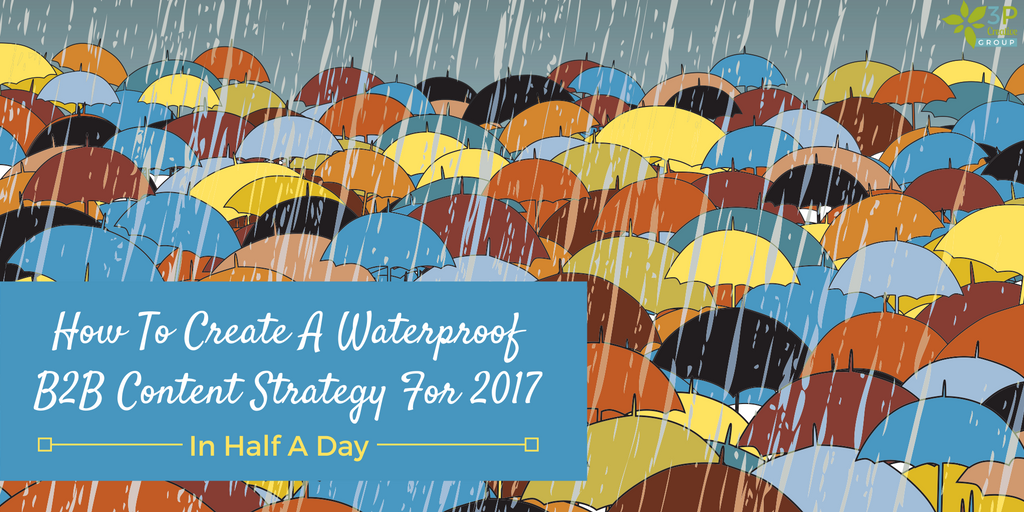The 5 Blog Topic Categories For Interior Designers To Attract More Traffic & Convert New Clients
Looking for inspiration for blog post topics that haven't been covered a million times and will help you drive traffic, leads, and sales for your interior design firm?
I have written over 1,000 articles for my clients, my content has been published in the Content Marketing Institute and other industry publications, and I am a Certified They Ask, You Answer coach. I have seen firsthand what works and what doesn't.
In this newly revised article, I will walk you through the five core topic groups that not only drive organic traffic, but also leads and sales. Fair warning: You might initially consider these taboo topics, but by the end of the article, you will have a clear understanding of what your clients are researching and how you can and why you should address these questions.
The Big 5
When this article (How To Get 365 Blog Topics For Interior Designers In 1 Hour) was first published in 2015, I built a framework for easily coming up with 365+ blog post topics in an hour. However, while it was enough to regularly hit publish on well-written articles back then, it won't really move the needle today.
Think about it for a second. What questions are you trying to answer when researching a product or service you are considering buying? How much does it cost? Are there any additional fees I need to know about? Which product is better for my problem? A or B? And so on?
The funny thing is, though, we often don't address these questions as a business. We are vague and ask our potential clients to give us a call or meet with us to find out how it works and how much it costs.
Therefore, in 2023 and beyond, you need to answer the questions your potential clients are researching — and, coincidentally, these are the topics hardly anyone is ever willing to tackle:
- Cost & Price
- Versus & Comparisons
- Potential Problems
- Best Of
- Reviews
To get started, review your emails, review your last conversations with potential clients, and jot down all the questions they asked you. I bet most of them fall into these categories.

Address Cost & Price Questions
Ouch, did I just see you flinch? If addressing the price of your services makes you squirm uncomfortably in your seat, think back to the last time you made a considered purchase. I bet that you spent a good deal of time researching it online. What was one of the first and most important questions you tried to find an answer to? Cost and price. Exactly.
Now, what would happen if you found a website that had exactly what you were looking for, but instead of telling you the price, it had a "Request a quote" or "Call for pricing" button? You'd probably feel like the website had something to hide and move on to a competitor.
You Don't Have To Give Exact Prices, But You Need To Explain The Value
Even if you cannot give exact prices because the cost of your interior design services depends on various factors, you can provide a general price range of what someone can expect. You can also explain what investments are required to go up (e.g., the complexity of the project) or down. Explore all the questions you have ever gotten from your clients and answer them honestly, transparently, and with as much detail as possible.
Here are a few sample questions to get you started:
- What is the average price of interior design services?
- How much does it cost to hire a professional interior designer?
- What are the different types of interior design services and their costs?
- How do prices vary based on the services offered?
- What factors impact the price of interior design services?
- What is included in interior design service costs?
- What additional costs must I consider when hiring an interior designer?
- Are there discounts available on interior design services?
- Is there a way to reduce the cost of interior design services?
- Is it worth spending more on interior design services?
- How do I know if I am getting a good price for interior design services?
- Are there any hidden costs associated with interior design services?
- What are the benefits of using a professional interior designer?
- How does purchasing work when using a professional designer?
- How much does it cost to redecorate my living room?
Since you likely are a local business, include your region in your blog post title (where it's appropriate) to give the title local context, e.g., "How much does an interior designer cost in Orange County, CA?"
Don't Forget About Worth & Value
Finally, consider whom you are talking to. Are you serving high-end clients who pay you to design luxury spaces? The budget still is essential to them — but on a very different scale than a middle-class, first-time homeowner who just invested all of their savings in the purchase of their house and is looking for some inexpensive DIY projects.
For a high-end client, you can consider topics such as "Is a Kitchen Remodel Worth It?" and "How to Make Sure Your Interior Designer Stays On Budget." If your clients are first-time house owners, topics like "The Value of a One-Hour Design Session" and "5 Inexpensive Bathroom Makeovers" will hit home.
Versus & Comparison Articles
Your clients have a problem that your services might or might not be the answer to. For example, their kitchen is 20 years old and they really want to remodel it. Or they just bought a new house and they are looking for someone to help them redecorate it to their taste.
Usually, people haven't hired an interior designer before and they don't know the difference between an interior designer and an interior decorator. Should they not bother with an interior designer and just let their contractor or architect do that part of the job as well? Or can they do it themselves?

In addition to staying very narrow on the subject, you can also go broader to explore other solution approaches your clients ask you about. Maybe they ask you about whether it is worth doing a full kitchen remodel versus painting the kitchen cabinets and redecorating. Or they wonder whether they should redesign the whole house at once or do it in stages. You get the point.
Address each one of those questions in a separate blog article and explain the differences between each option. Weigh the benefits and disadvantages of both, and explain which option is better suited for which situation. Always try to be as helpful, unbiased, and honest as possible. The goal is to give your reader all the information to make the right decision for themselves.
Talk About Potential Problems
Think back to when you bought something big. What were your biggest concerns? Most people worry they will make the wrong decision and have buyer's remorse.
As a service provider, the best way to calm your client fears to address their worries, concerns, and anxieties head-on. What are some things you can think of that can derail a project? Here are sixteen things I can think of from the top of my head:
- Avoiding common pitfalls when hiring an interior designer
- 5 Risks of hiring an inexperienced interior designer
- What to know before hiring an interior designer
- The costly consequences of choosing the wrong interior designer
- Steering clear of shady interior designers: A guide
- How to spot a bad interior designer before you hire them
- How to know when not to hire an interior designer
- What to look out for before you sign an interior design contract
- How can I tell if a designer fits my project well?
- What you need to know about an interior designer's qualifications and experience before hiring them
- Understanding your interior designer's design process
- What to expect regarding timeline when working with an interior designer
- How not having a clear budget or expectations can ruin your interior design project
- Why clear communication between designer and client is essential
- What happens if I cannot agree on a design concept or style?
- 5 Tips on how to properly research an interior design firm or designer
Imagine talking to a prospective client, and before you send them the contract, you send them a few of those blog posts addressing what you sense are their concerns. For example, if they keep asking about timing, you can proactively send them an article explaining a typical timeline for their type of project. Or maybe they hired an unqualified designer before and got burned. Calm their fears by sharing your articles about researching a designer's qualifications, telling if a designer is a good fit, and avoiding common pitfalls.
This establishes trust and sets ideal conditions for a long-term relationship.
Discuss The Best (Even If You Aren't It)
Now that we have covered pricing, comparing options, and what might go wrong, let's move on to the next big question we as consumers are obsessed with: Who is the best? As customers, we always want to know what the best available option is. Even if we cannot afford it, we want to know what it is and how close we can get to obtaining it.
For an interior designer, there are two major types of Best Of articles you can write: 1. "Who is the best interior designer?" and 2. "What are the best options for clients to consider?".
Who Is The Best Interior Designer?
Let's talk about this type of Best Of article first. You will want to answer these questions within the context of your location and/or your niche. How deep you go depends on your brand, your services offered, and your reputation. For example, you can write an article on:
- Best residential interior designers in California
- Best interior designers in Chicago
So, let's address the elephant in the room. Yes, you are writing about your competition. But what do you have to lose? Nothing, because it will take your reader five seconds to google the answer themselves. What do you have to gain? A lot, because by highlighting these other designers, you show confidence in your own value, that you have nothing to hide, and that people can trust you. Speaking of trust, don't include yourself in that list or it will come across as biased.
Other Best Of Articles
Another great way to write Best Of articles is to share the things your clients ask you for recommendations about or the things you wish they would know, such as:
- Best antique stores for art deco items in New York City
- The best interior designers to follow on Instagram to get inspired by
I know this can be a contentious topic, but it is very worth trying. As you write these, always stay truthful. You might even be surprised that your competition ends up sharing your article with their audience on social media.
Share Customer Reviews, Testimonials, & Success Stories
Finally, let's talk about your customer success stories. Potential clients want to get a feel for what it would look like to work with you and see outcomes that you have achieved.
Make it a habit to ask your clients if you have their permission to write a blog post about their finished space and the project itself. Take pictures of the space before you start, and write about the pain point or the design challenge your client was facing, how they found you, and what you turned the space into. Feature (and link back to) the furniture designers that you used and the Houzz idea book that inspired you, and give credit where credit is due.
Add customer testimonials and reviews to let your customers tell their story in their own words. Better yet, create a customer journey video to tell the story visually and let the emotions come across.
Bonus: Share Your Expertise & Show Off Your Experience
Google is all about Experience, Expertise, Authoritativeness, and Trustworthiness (E-E-A-T). Rather than tackling generic topics and dumbed-down listicle articles, like "The 10 Best Interior Design Ideas for a Modern Home", focus on highlighting YOUR personal expertise and experience. Explain how you solved a tricky problem and show it with images and video.
I am not saying you should write "How To Be An Interior Designer And Take My Job", but giving exact and valuable tips and tricks from your own interior design book is essential for showing off what you are made of and establishes trust in your ability as a designer.
Conclusion
In conclusion, the five core topic groups that interior designers should be addressing to drive organic traffic, leads, and sales are Cost & Price, Versus & Comparisons, Potential Problems, Best Of, and Reviews. These are the topics that potential clients are researching and that, to move the needle today, interior designers must address.
For interior designers who want to take their content marketing to the next level, coaching and content training can be a great help. From understanding the ins and outs of content strategy to create compelling blog content, coaching, and content training can provide the knowledge and guidance necessary to drive more organic traffic, leads, and sales.
Share this
You May Also Like
These Related Stories

The Future of Content Management: Navigating Generative AI's Impact on Blogging

Google E-E-A-T & Generative AI: Become the Trusted Voice in Your Niche






Comments (4)